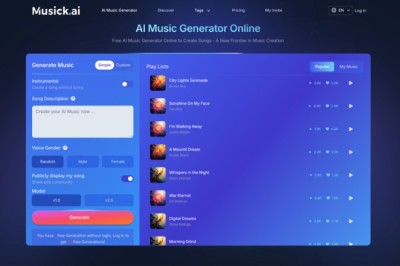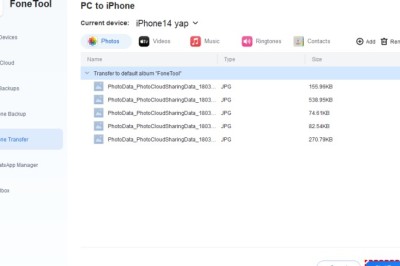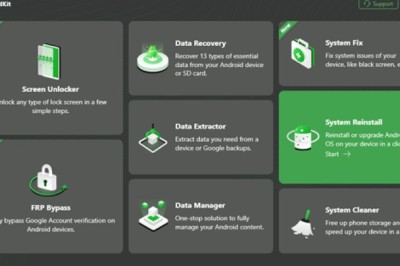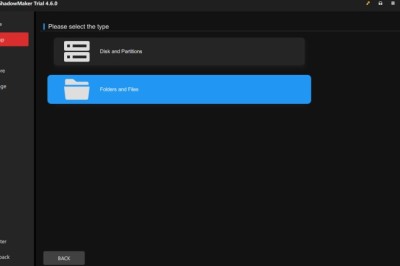views

Photo by Campaign Creators on Unsplash
If you’re planning on launching a web application, then being conscious of your UI or UX design is a critical step you shouldn’t skip. With that in mind, here are a few ideas on optimizing your UI or UX design to benefit your web app overall.
1. Improve Page Speed
Web page speed measures how fast a web page loads and displays content to the user. It is an essential factor in website performance and user experience, as it affects how quickly users can access and interact with the content on a website.
It is also crucial for SEO, as search engines consider the loading times of web pages when ranking them in search engine results.
When you have a fast-loading web app, it makes it less likely that someone will click out of your website upon just landing on it. That way, your overall bounce rate will be lower, influencing your SEO ranking.
It affects the way users interact with the website, as well as how they perceive its design. Improving page speed can help create a better user experience by reducing loading times and improving navigation.
A slow-loading page can cause users to abandon your website and lead to a decrease in conversions. Therefore, optimizing your web application’s page speed is essential to provide users with an optimal UX and UI design.
The different ways that you can optimize your web page speed would be through the following:
- improving server response time
- reducing image size
- use caching and other optimization techniques
There are many other ways you can further optimize the overall loading speed of your web application. The key is to ensure that your web loading speed doesn’t reach anywhere longer than three seconds. The one to two-second range is the ideal loading speed, but the faster it is, the better.
2. Run A Competitive Analysis
One thing that can help you better optimize your overall UI or UX design for your web application is by running a competitive analysis.
Suppose you didn’t know what it was. In that case, a competitive analysis helps designers identify and analyze the strengths and weaknesses of their competitors’ designs and understand the opportunities for improvement in their designs.
This analysis should help create better user experiences by understanding user needs, preferences, and behaviors. By performing a competitive analysis, designers can also identify areas where they can differentiate from their competitors and create unique user experiences.
There are a variety of different contexts where you can make use of competitive analysis in UX design. For example, if you plan on launching a new product or feature for your web app to support your current UX customer research, figure out how your web app can improve in a way your competitors don’t provide for your target audience.
The goal of a competitive analysis isn’t to copy your competitor’s UX or UI design for their web apps. It’s to identify what works and what doesn’t based on what your target audience interacted with already.
The data you get from your competitive analysis doesn’t only help you with your UI/UX design for your web app. It also lets you figure out which features and products they look forward to having on your web app. Plus, you can avoid features or aspects that they don’t like so that you can provide a truly optimized experience for them.
3. Show Customer Testimonials
When you do a good job or receive customer feedback, legitimize and use it to your advantage by formatting it into a customer testimonial.
Customer testimonials are an effective way to build trust and credibility with potential customers. They provide real-world proof of the quality of a product or service and can be used to highlight the positive experiences that customers have had.
Testimonials can come in many forms, from written to video reviews, and they can be helpful to websites, social media, and other marketing materials. Ultimately, customer testimonials are a powerful tool for businesses looking to build customer relationships.
Just ensure you get your customer’s consent before displaying their comments and reviews on your website, socials, or web app. Once you get that, you can show that and use that to your advantage.
When designing your web app, make sure you make the customer testimonials and place them in the right place. That way, they have the most impact on your potential customers.
For example, if you sell products on your web application, it’s a good idea to show customers’ reviews right after the product details. If you’re selling a service, insert customer testimonials during the part where the potential customer might wonder whether you’re trustworthy.
The proper placement of the customer testimonials can ensure that users think of you more highly and make them likely to convert, which you may want to happen on your web app.
4. Add More Whitespace
Anyone with experience in arts or some design knows what whitespace is and how it adds aesthetic value to anything, including your web app.
Suppose you don’t know what it is. In that case, whitespace is the space between elements in a user interface that helps to create a visual hierarchy and structure, making it easier for users to understand the content and navigate the page.
You use whitespace to separate elements on a webpage, making it easier for users to read and understand the content. It also helps to create a visual hierarchy, making the web page more aesthetically pleasing. By using whitespace effectively, developers can ensure that their web applications are visually appealing and functional.
It can draw attention to specific elements, create balance, and improve readability. It can also help make a website appear more modern and professional. By using whitespace effectively, designers can ensure that their web applications are aesthetically pleasing and easy to use.
Here are a few benefits of the use of whitespace in your designs:
- use whitespace to emphasize and focus on the right things
- make your web app appear more elegant and luxurious
- your content becomes easier to comprehend
- users can interact with your web app for a longer time
The challenge with incorporating white space might make your web app lose its personality if you’re not careful. Therefore, ensure you can firmly stamp your branding on your web app, even with whitespace.
5. Continuous Design Improvement
For any web application, UI and UX design are two of the most critical aspects you need to consider. However, more is required to design the UI and UX once; you should constantly improve it.
Continuous design improvement is essential for optimizing your web application’s UI and UX to ensure users have a great experience. To keep up with the ever-evolving user expectations and technology advancements, it is vital to ensure that your web application’s UI and UX design remains up-to-date.
Also, design improvement helps ensure that your web app doesn’t feel outdated and old, which can lead people to distrust your web app a little bit.
It would be a mistake to think that your work ends there once you settle on things with your web app. If you don’t have the mindset of constant improvement for your UI or UX design, then you won’t truly optimize your web app.
Another reason you should have continuous design improvement is that it helps you modify your web app based on the feedback you receive from your web app users. After all, once you launch your web app, you will hear some common user comments and requests.
You might lose a user if you don’t listen to their feedback regarding negative experiences on your web app. Therefore, always look for ways to improve your UI or UX design.
6. Use High-quality and Original Images/Videos
Images and videos can give users a more engaging experience, provide visual cues, and guide them through the application. They also add an element of professionalism to the overall design.
You can use these images and visuals as backgrounds, headers, or even as part of the navigation system. They can also be for storytelling purposes - allowing users to understand better the product or service you are offering.
Ideally, you create the images and videos yourself as much as possible. However, some copyright-free pictures can serve as placeholders if you have none.
Once you can use high-quality and original images or videos, don’t hesitate to do so. Also, don’t forget to compress them whenever possible so that the page’s loading speed doesn’t become too slow for your users’ liking.
7. Make it Mobile-Friendly
According to Sytian Productions web developer philippines, a mobile-friendly web app will be crucial to a smooth user experience for your web app. Although the best way to do that is by having an actual mobile app version of your web app, that doesn’t mean you should neglect the mobile-friendliness of your web application when they view it on a mobile gadget.
Some people may not be interested in installing your mobile app just yet. Having a mobile-friendly web app can help you still so that they can still have access to the things they need, even when they don’t have the mobile app.
Conclusion
These optimization tips help you have a web app your users will want to interact with. Plus, it should be intuitive for them to use and navigate your web app when you follow these optimization tips as much as possible. Thus, next time you launch a web app, keep note of these UI or UX design tips.





















Comments
0 comment